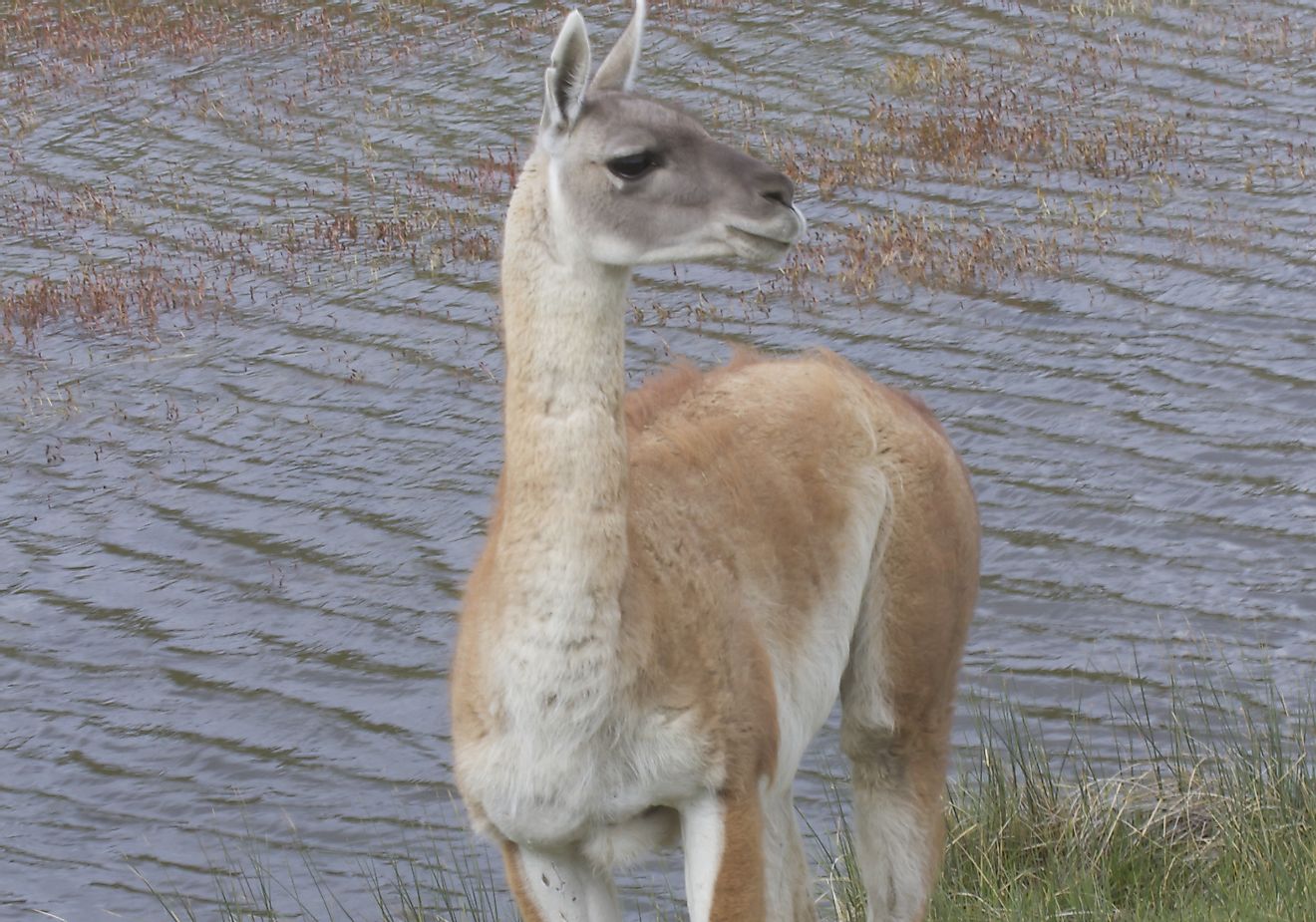Guanaco Facts: Animals of South America

5. Physical Description
The guanaco is a member of the Family Camelidae, belonging to the same genus as domesticated llamas. Their thick and wooly fur coats are yellowish brown from the upper part of the neck to their thighs and rump, though their underbellies are white with some brown specks. The guanaco’s head and goat-like ears are grayish-black, with specks of white. They have long legs and a long neck, topped off with camel-like eyes and snouts. The shoulder height of a mature guanaco is from 110 to 115 centimeters. Its head to body length is 120 to 225 centimeters, with a tail length of between 15 and 25 centimeters, according to ARKive Initiative. When mature, its weight reaches from 100 to 120 kilograms.
4. Diet
The guanaco is a flexible herbivore that mainly grazes and forages on grasses and shrubs, but may also eat lichens, fungi, cacti, flowers, fruits, and succulent plants when their preferred main food sources become scarce. Its diet diversity, along with its efficient water management and energy metabolism, enables it to survive in the harsh, arid climates to which guanacos are native to. According to the San Diego Zoo, the guanaco doesn’t need to drink any water very often, as it utilizes so much moisture from the plant matter in its diet.
3. Habitat and Range
The guanaco population is scattered across South America, from northern Peru to southern Chile, as well as throughout parts of Argentina, Bolivia, Paraguay, and Tierra del Fuego, Navarino, and Falkland islands. Their habitat within these regions include arid and semiarid climes, desert grasslands, savanna, montane ecosystems, shrub-lands, and wet, temperate forests, according to Animal Diversity (AD). According to the 2008 International Union for Conservation of Nature's (IUCN's) Red List of Threatened Species, the guanaco is classified as a species of "Least Concern".The estimated global population of guanacos is estimated to total around 600,000, as per IUCN statistics. Nonetheless, immediate threats emanate from habitat loss, hunting, and poaching, as well as crossover transmission of diseases from domesticated livestock.
2. Behavior
The guanaco is a social animal, and up to 30 females and young ones live together in a given territory defended by a single, dominant, mature male. Territorial boundaries are marked by communal dung heaps. Young, non-territorial, males can live solitarily, or within an all male group cluster. During droughts or snowy seasons, when food is most scarce, guanacos form mixed sex herds of up to 500, and travel to territories with greater food abundance, according to Animal Diversity (AD). This herding reduces the risk of predation. When fighting rivals, guanacos will neck wrestle or ram one another with their chests, all the while producing high pitched scream or low growl. Guanacos can run at speeds of up to 56 kilometers per hour (35 miles per hour).
1. Reproduction
Sexual maturity for a female guanaco begins at 2 years old, with breeding typically commencing at the age of 3. A male, meanwhile, may reach maturity at anytime between 2 and 4 years of age, according to Animal Diversity (AD). Each year sees but one single breeding season for the guanacos. In an effort to attract females, a male picks a grazing territory with food abundance. The most dominant guanaco male then mates with a nearby estrous female after sparring with competing males and defeating them. The sparring is characterized by spitting, biting, and shoves of the body. After mating, the gestation period takes from 345 to 360 days, after which time the females give birth to a single offspring. As mammals, guanaco mothers feed their young with their own milk. After 13 to 15 months of being nursed, the young one is forced out of the group by an adult male. In captivity, the Guanaco can live up to 33.7 years and, in the wild, 28 years, according to AD.











